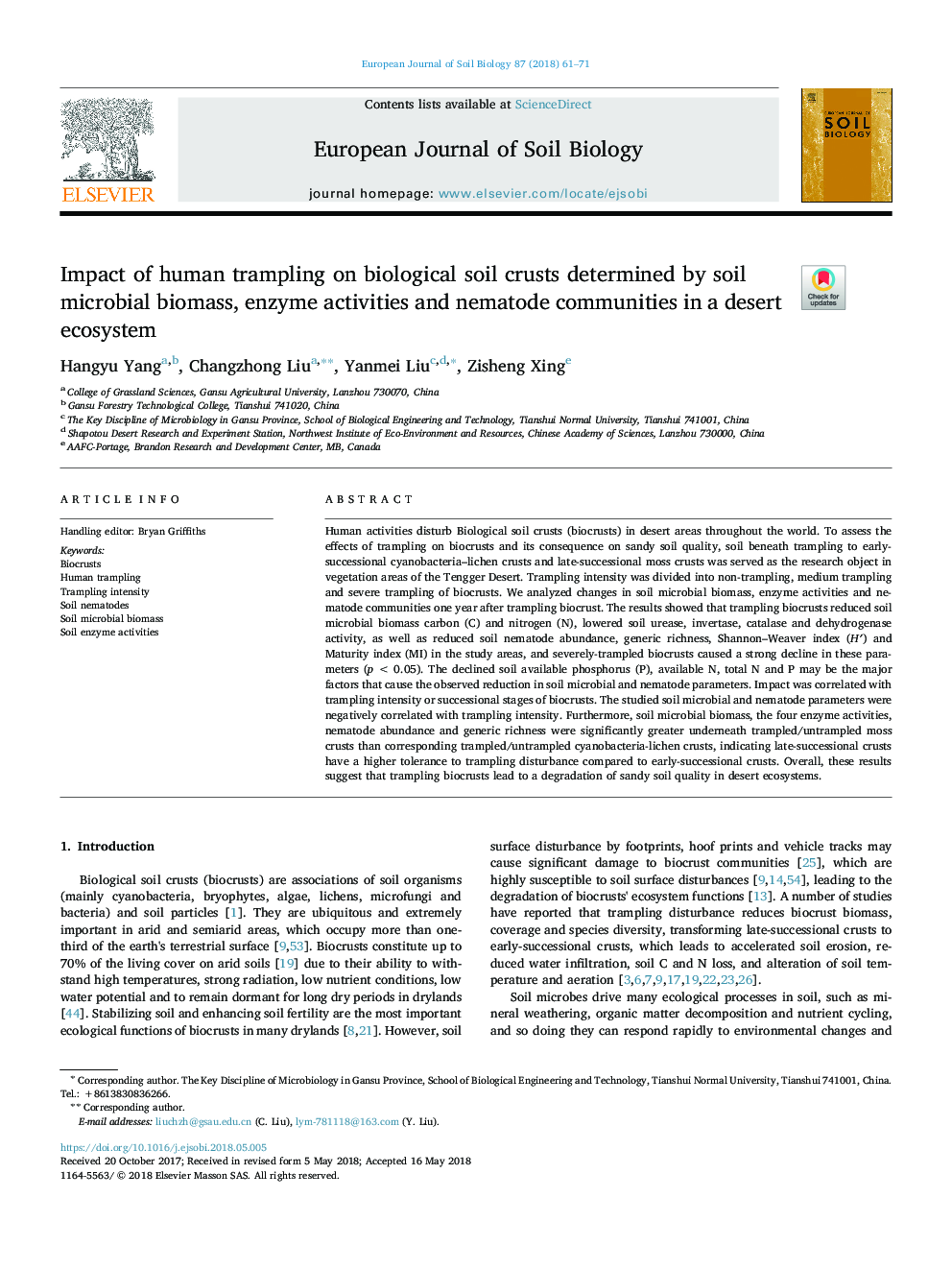| کد مقاله | کد نشریه | سال انتشار | مقاله انگلیسی | نسخه تمام متن |
|---|---|---|---|---|
| 8848358 | 1618105 | 2018 | 11 صفحه PDF | دانلود رایگان |
عنوان انگلیسی مقاله ISI
Impact of human trampling on biological soil crusts determined by soil microbial biomass, enzyme activities and nematode communities in a desert ecosystem
ترجمه فارسی عنوان
تأثیر بذر انسان در پوسته های زیستی بیولوژیک تعیین شده توسط بیوماس میکربی خاک، فعالیت های آنزیمی و جوامع نماتد در یک اکوسیستم بیابانی
دانلود مقاله + سفارش ترجمه
دانلود مقاله ISI انگلیسی
رایگان برای ایرانیان
کلمات کلیدی
موضوعات مرتبط
علوم زیستی و بیوفناوری
علوم کشاورزی و بیولوژیک
دانش خاک شناسی
چکیده انگلیسی
Human activities disturb Biological soil crusts (biocrusts) in desert areas throughout the world. To assess the effects of trampling on biocrusts and its consequence on sandy soil quality, soil beneath trampling to early-successional cyanobacteria-lichen crusts and late-successional moss crusts was served as the research object in vegetation areas of the Tengger Desert. Trampling intensity was divided into non-trampling, medium trampling and severe trampling of biocrusts. We analyzed changes in soil microbial biomass, enzyme activities and nematode communities one year after trampling biocrust. The results showed that trampling biocrusts reduced soil microbial biomass carbon (C) and nitrogen (N), lowered soil urease, invertase, catalase and dehydrogenase activity, as well as reduced soil nematode abundance, generic richness, Shannon-Weaver index (Hâ²) and Maturity index (MI) in the study areas, and severely-trampled biocrusts caused a strong decline in these parameters (pâ¯<â¯0.05). The declined soil available phosphorus (P), available N, total N and P may be the major factors that cause the observed reduction in soil microbial and nematode parameters. Impact was correlated with trampling intensity or successional stages of biocrusts. The studied soil microbial and nematode parameters were negatively correlated with trampling intensity. Furthermore, soil microbial biomass, the four enzyme activities, nematode abundance and generic richness were significantly greater underneath trampled/untrampled moss crusts than corresponding trampled/untrampled cyanobacteria-lichen crusts, indicating late-successional crusts have a higher tolerance to trampling disturbance compared to early-successional crusts. Overall, these results suggest that trampling biocrusts lead to a degradation of sandy soil quality in desert ecosystems.
ناشر
Database: Elsevier - ScienceDirect (ساینس دایرکت)
Journal: European Journal of Soil Biology - Volume 87, MayâJune 2018, Pages 61-71
Journal: European Journal of Soil Biology - Volume 87, MayâJune 2018, Pages 61-71
نویسندگان
Hangyu Yang, Changzhong Liu, Yanmei Liu, Zisheng Xing,
